Gesture, in its most original essence, is the trace of thought becoming concrete, the point of contact between mind, hand and matter. This principle inspires Gestures, the column of Finestre Sull’Arte created to discover the creative act of the artist and to document the transformation of raw materials into formal expressions capable of combining aesthetics and technique. This space includes the work of Dutch artist Jules Vissers, founder ofAtelier Taftique (opened last April 15 in Florence).
The textile artist has in fact been selected to represent Italy at the next edition of Révélations - Biennale Internationale Métiers d’Art et Créations, one of the most relevant global events for contemporary art crafts. The 2025 edition of the Biennale will be held at the Grand Palais in Paris from May 21 to 25 and will feature more than four hundred artisans and creatives from around the world. For Italy, the 2025 edition holds a prominent role: it will in fact be the Guest of Honor country, a choice that recognizes the historical and current contribution of Made in Italy in the contemporary creativity scene. The Italian participation is coordinated by Elisa Guidi, head of Artex - Centro per l’Artigianato Artistico e Tradizionale della Toscana (Center for Artistic and Traditional Craftsmanship of Tuscany), which for years has been promoting the quality and visibility of Italian craftsmanship excellence.
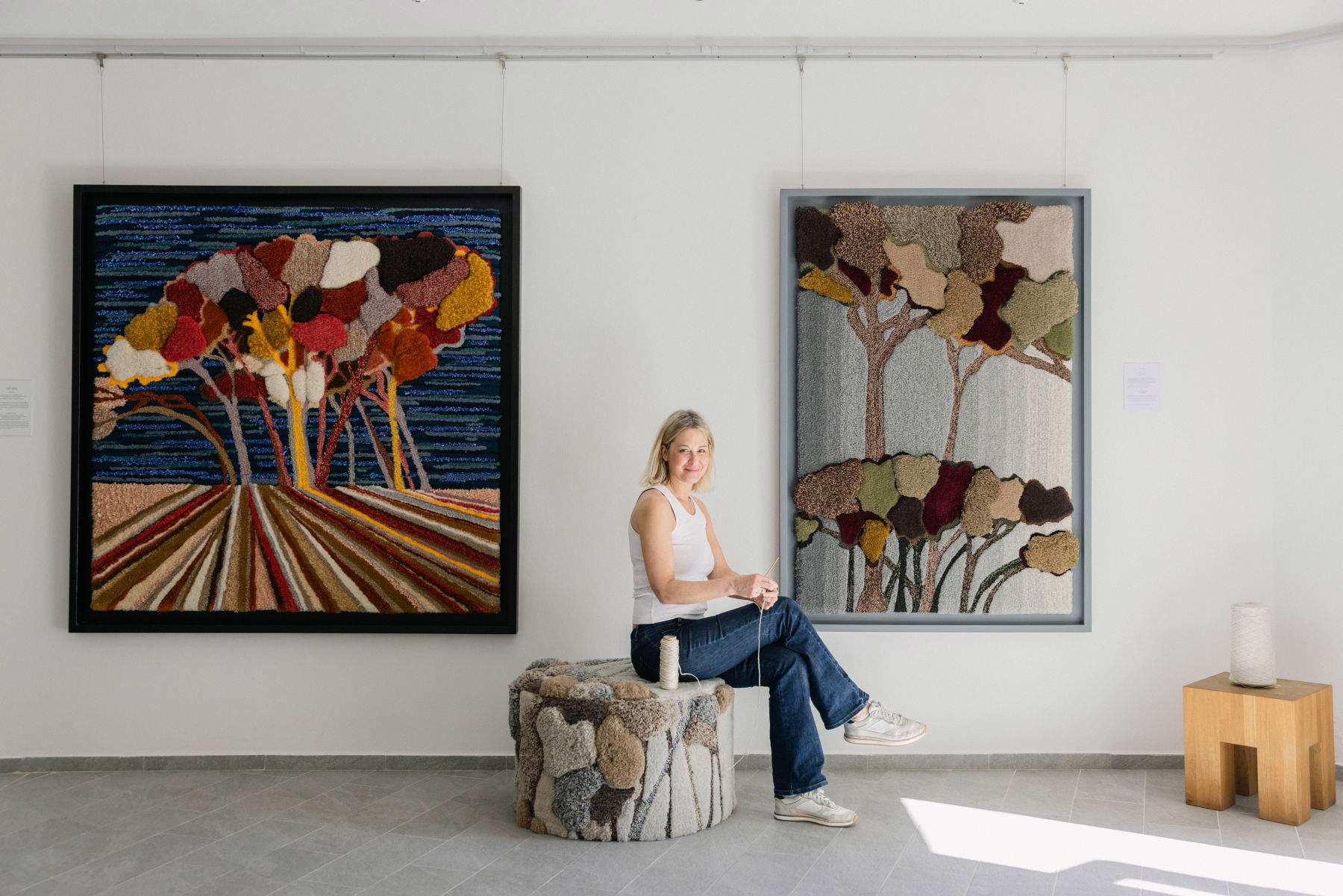
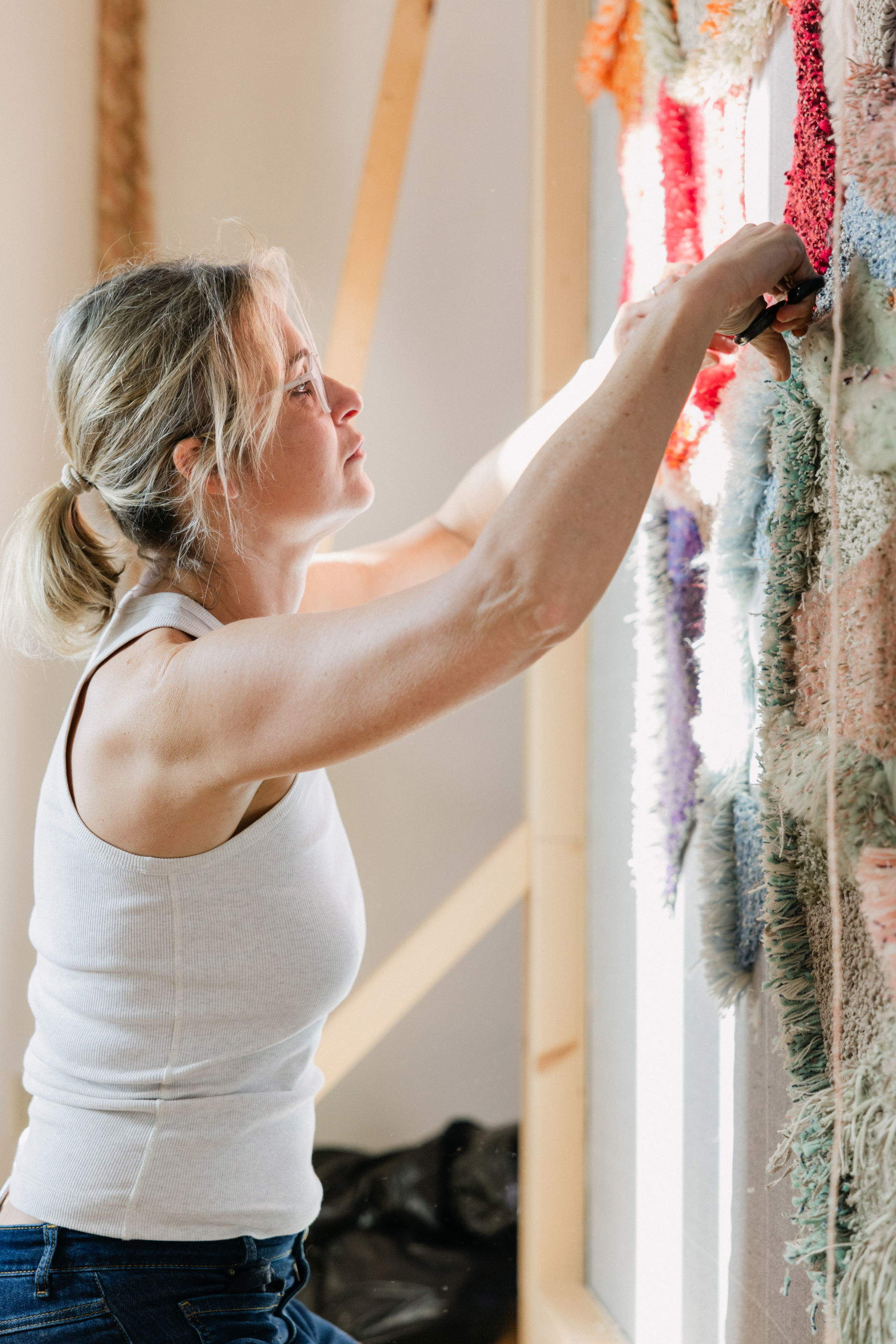
Jules Vissers is at the Italian Pavilion with the work Rebirth (Renaissance), a tapestry made in 2025 and part of the personal collection WINGS (Wings). The work is created using a variety of textile techniques, including tufting, weaving, crochet, embroidery and punchneedle, and is composed of materials such as merino wool, common wool, cotton, mixed yarns and felt. Its size (170 x 140 cm, with an additional 100 cm of tails) accentuates the visual impact of thetapestry, which unfolds in a fluid and dynamic manner. At the center of the work is the figure of the butterfly, a symbolic element shared by many cultures, embodying the concept of transformation, regeneration and rebirth. The tapestry presents a color gradation that reflects the transition between light and darkness, thus making the process of metamorphosis visible. The three-dimensional rendering of the fabric, on the other hand, contributes to reinforcing the idea of a living material, traversed by opposing tensions.
However, Jules Vissers’ research does not stop with the work exhibited in the Italian Pavilion. In fact, Atelier Taftique is also present in the Révélations section that takes the title Le Banquet. In this context, Vissers presents two additional tapestries, both made in 2025 and part of the Rhythm of Flowers collection: these are Beyond the Rainbow (Over the Rainbow) and Awakening (Awakening).
Over the Rainbow measures 220 x 230 cm and was made from merino wool, wool, cotton, mixed and recycled yarns, cellulose, and felt. Awakening, on the other hand, possesses smaller dimensions, 115 x 105 cm, but employs the same materials. Both works are inspired by the flower as a natural element, but reinterpreted in a geometric version. The stated references are the pictorial works of Sonia Delaunay, an artist associated with Orphism and known for her experimental use of color and form. Vissers’ textile compositions take up these suggestions by including spiral motifs in the central parts of the tapestries: a recurring symbol in prehistoric art, it is understood here as an emblem of growth and evolution. The techniques employed for the two works include, in addition to tufting and weaving, embroidery, punchneedle and the use of trimmings.
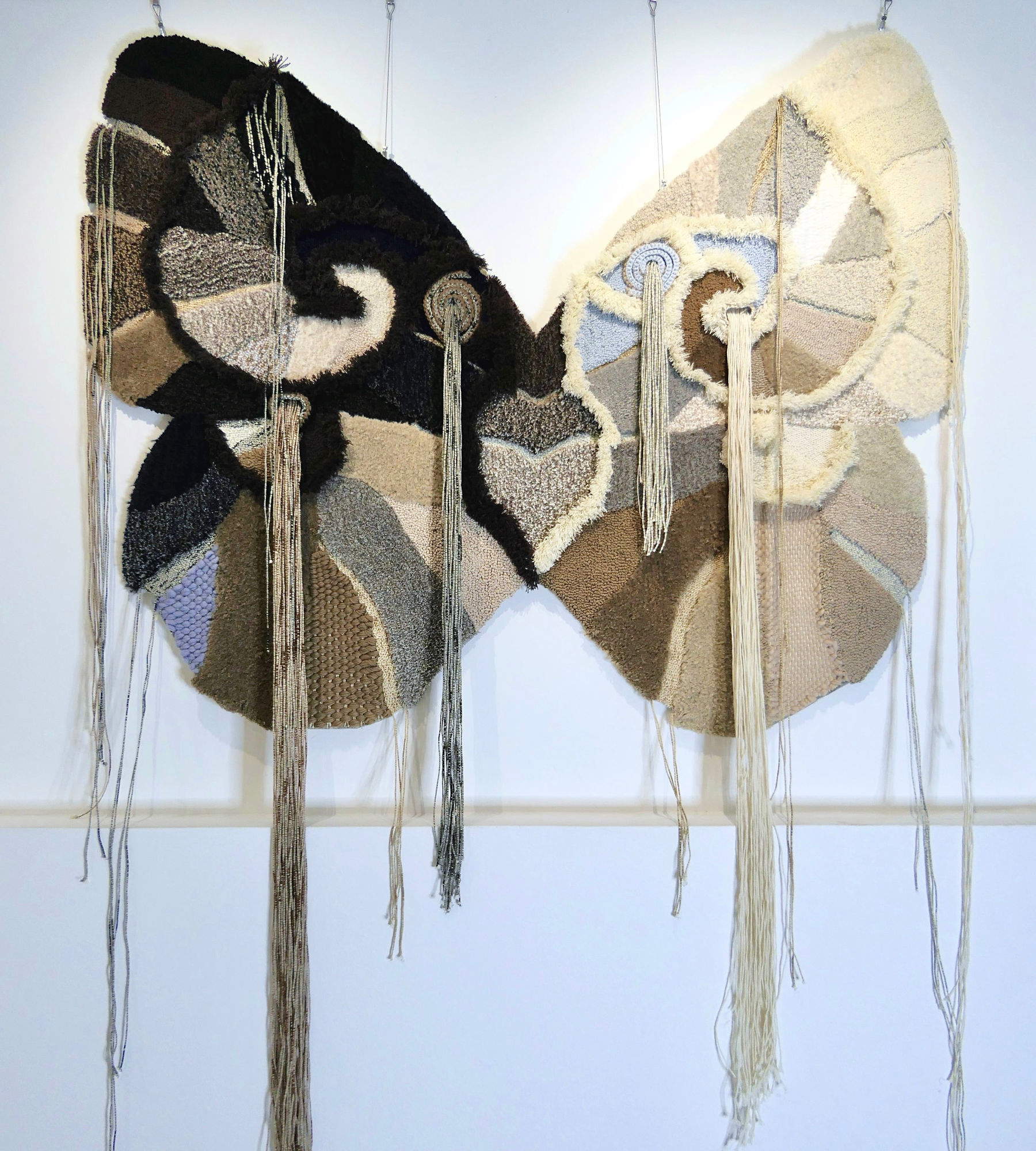
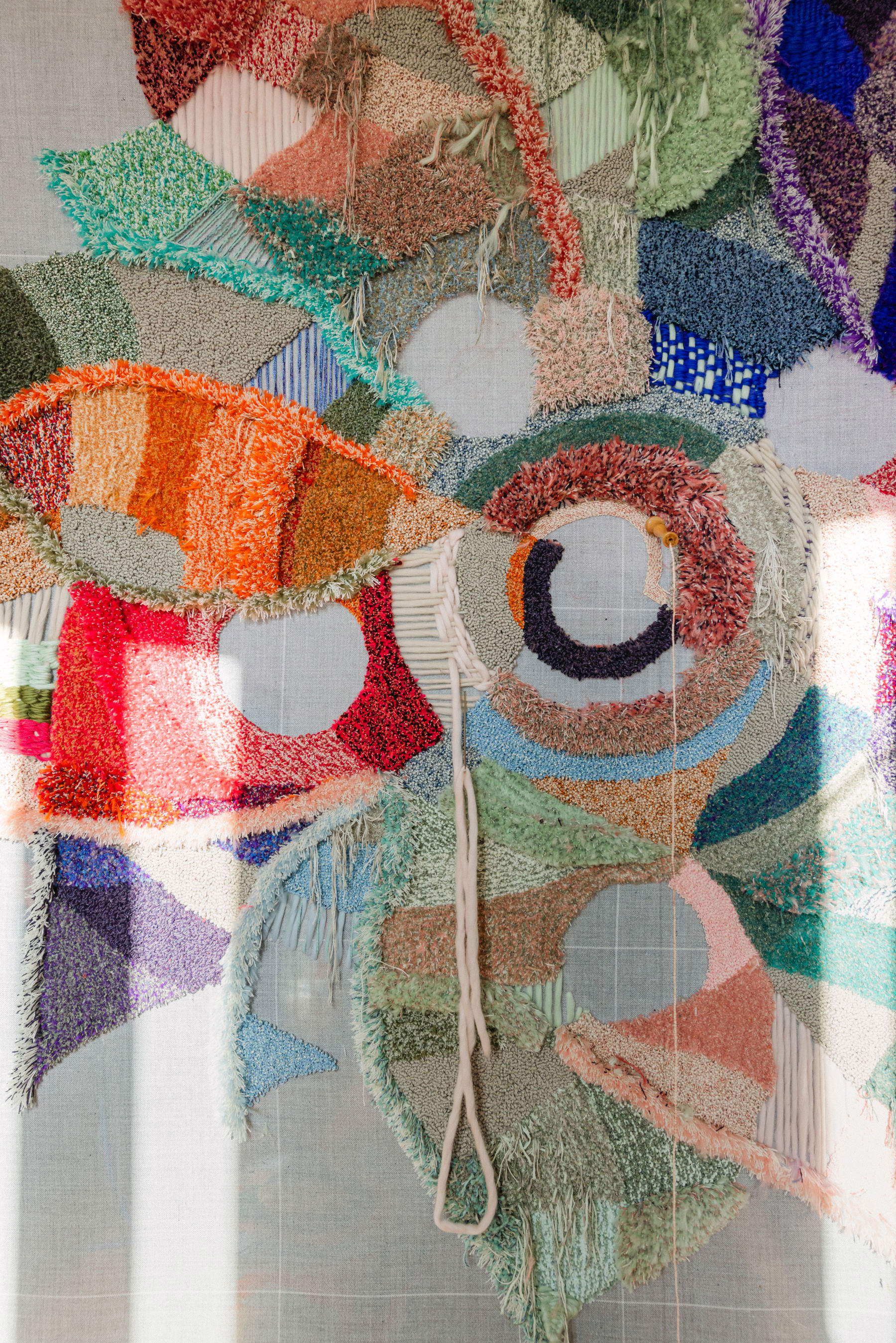
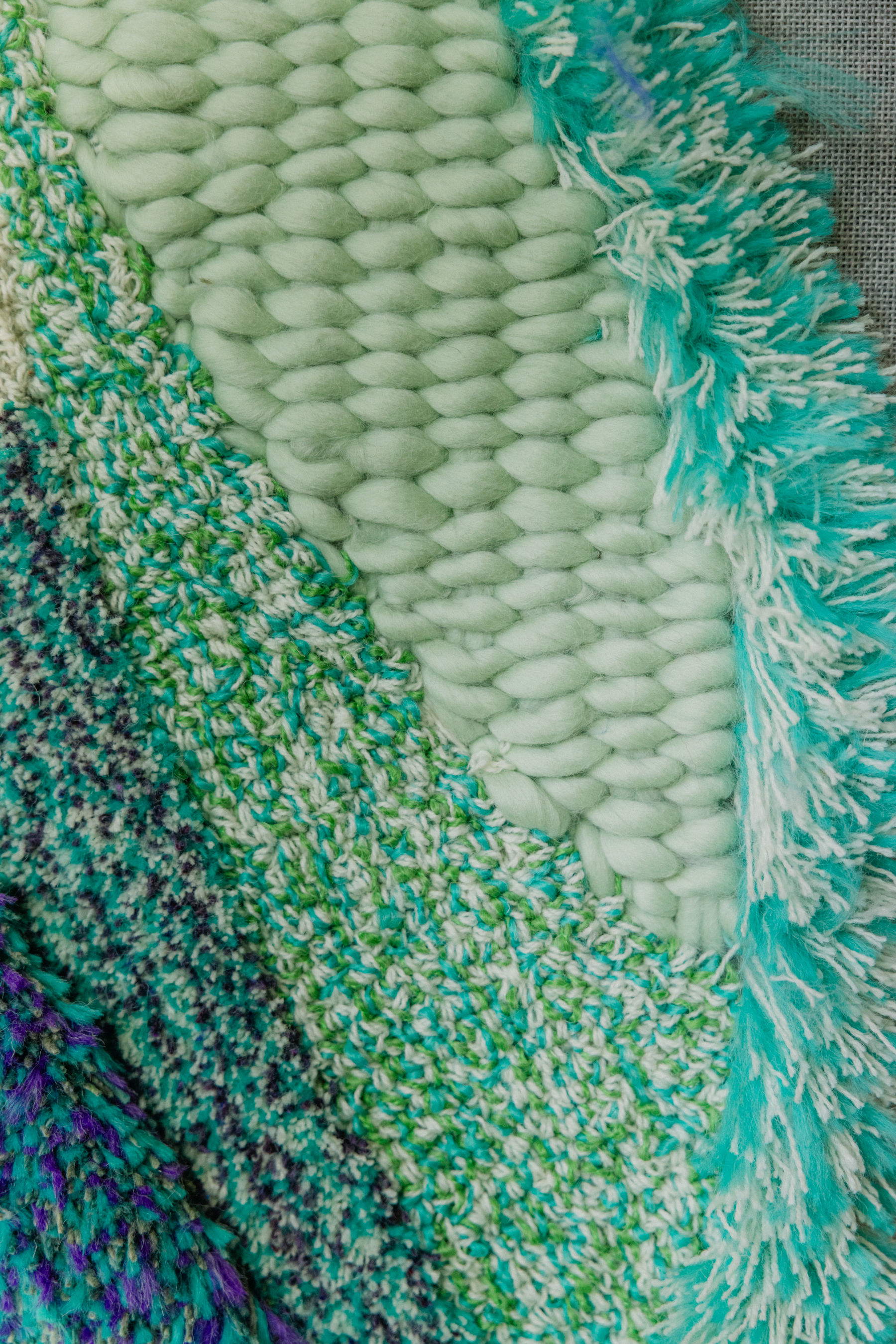
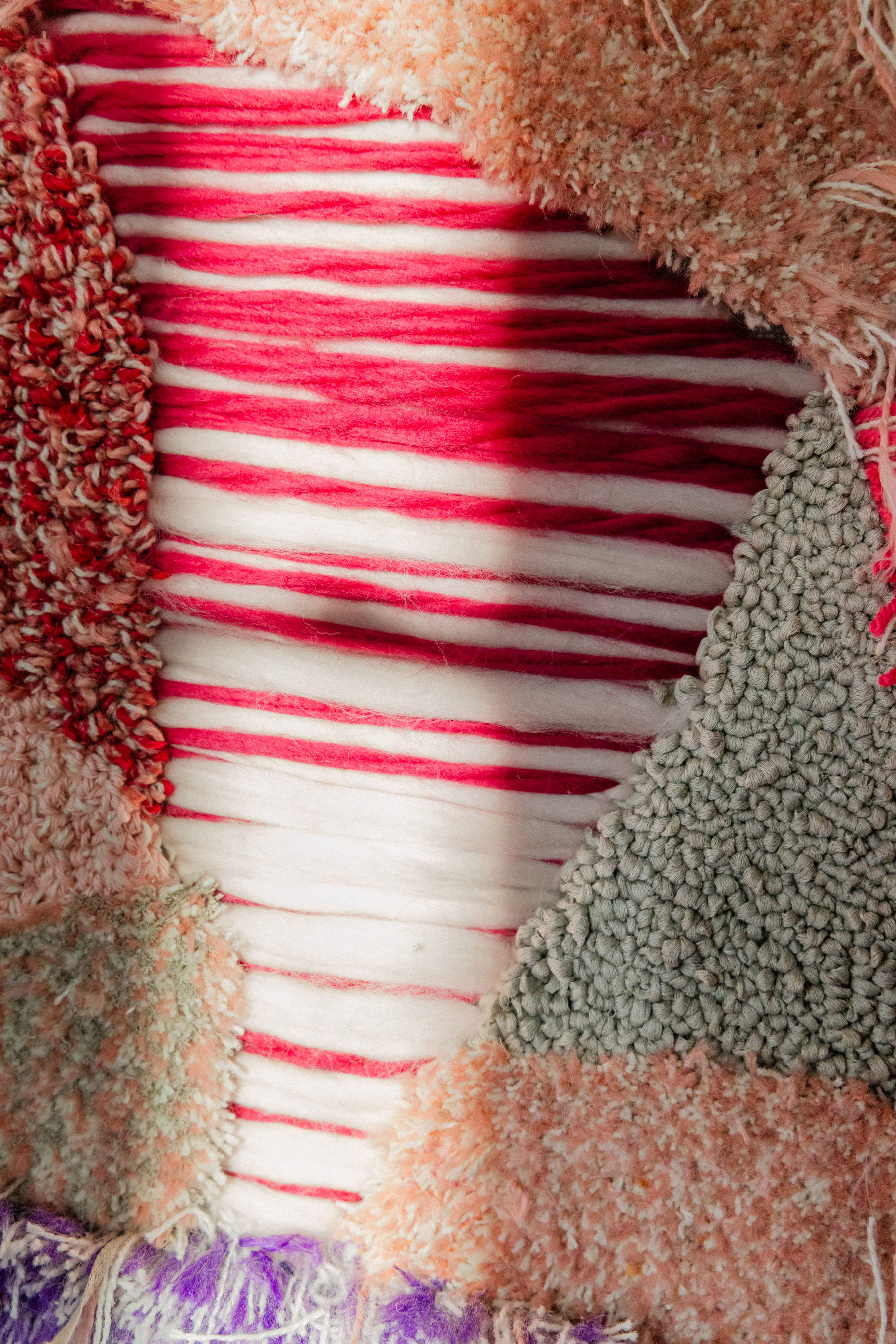
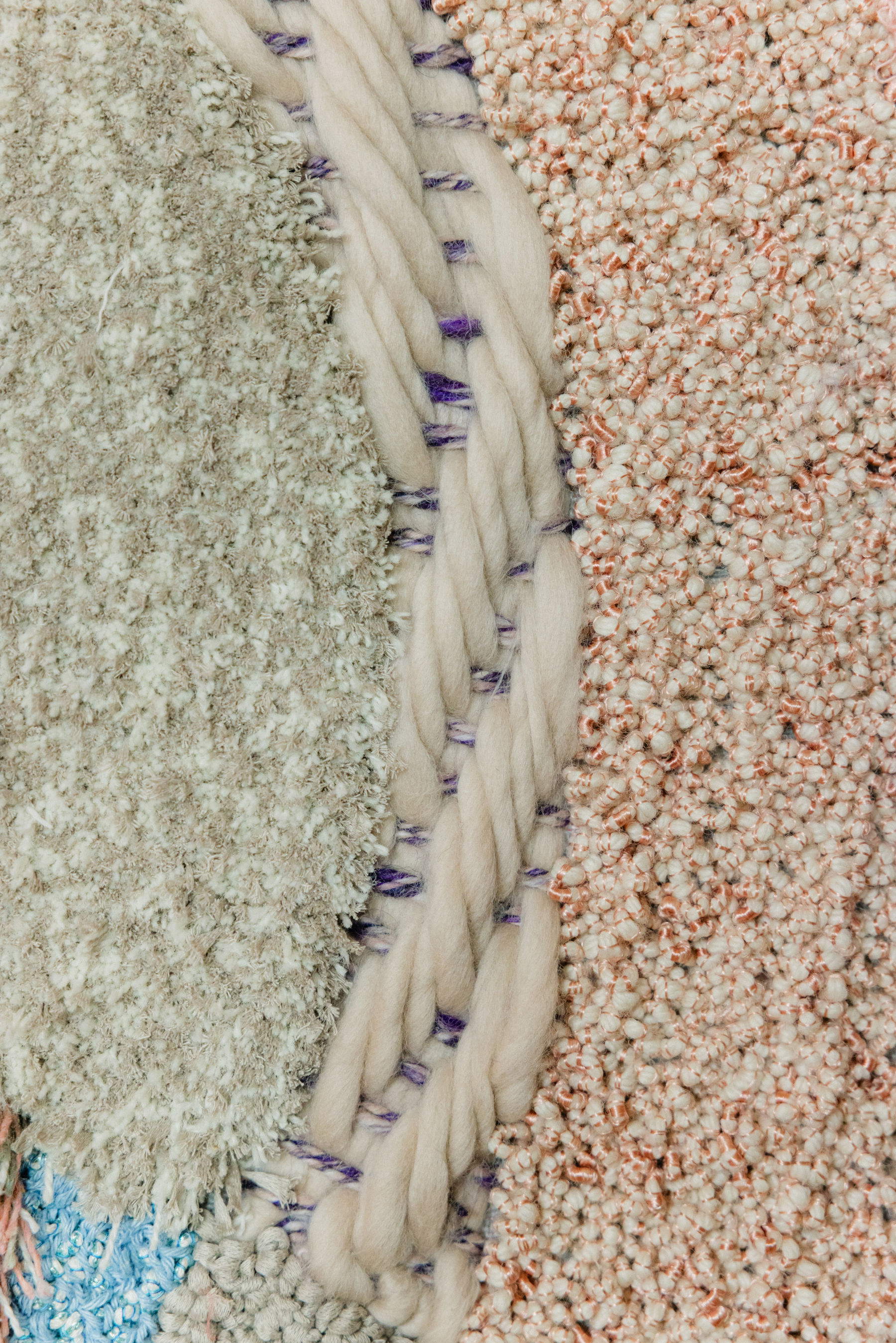
Jules Vissers, constructs a language that starts from gesture and develops through the textile medium, articulating a discourse that combines vision and matter. Thus, manual work is translated into complex forms that lead the audience to a tactile, as well as a visual, experience.
Her art stems from the link between nature, classical art and early 20th century movements such as cubism and art deco. “For me, my yarns are like my painting colors,” he says. “I often use complementary colors and curved geometric shapes, and I like to explore the interplay between different weaves and their three-dimensional effects, using varying yarn heights, pile types and combining heterogeneous yarn types. In my artistic journey, I have developed my style between abstract and figurative works. In the latter, I like to evoke playful and intimate scenes with a somewhat mythological appeal. In my purely abstract works there is a more explicit exploration of various textures and their three-dimensional effect.” His art is therefore a reflection on the ability of gesture to become narrative, on the possibility of attributing new meaning to materials through change.
"The main technique I use is tufting,“ Vissers continues, ”which is why I invented the name Taftique for my atelier. With this manual technique I can make specific scenes and patterns come to life. In combination with textile embroidery and weaving techniques, it allows me to create relief, height differences and textures, making my work exciting and caressing."
What then is the worldview according to Jules Vissers? His is a precise craftsmanship: a decided perspective of the world, built fiber by fiber. The art in the Taftique atelier pays homage to nature. And how does he do it? By favoring natural yarns, recycled materials and dead fibers from local suppliers. An honors graduate in Art Textiles from the Florence Art Academy, she received the European Textile& Craft Awardconferredby the European Textile Academy in January 2024. Vissers currently participates regularly in art and design events, including Milan Design Week and the Florence Biennale, and is beyond that a member of Homo Faber and the Isola Design Community (Milan).
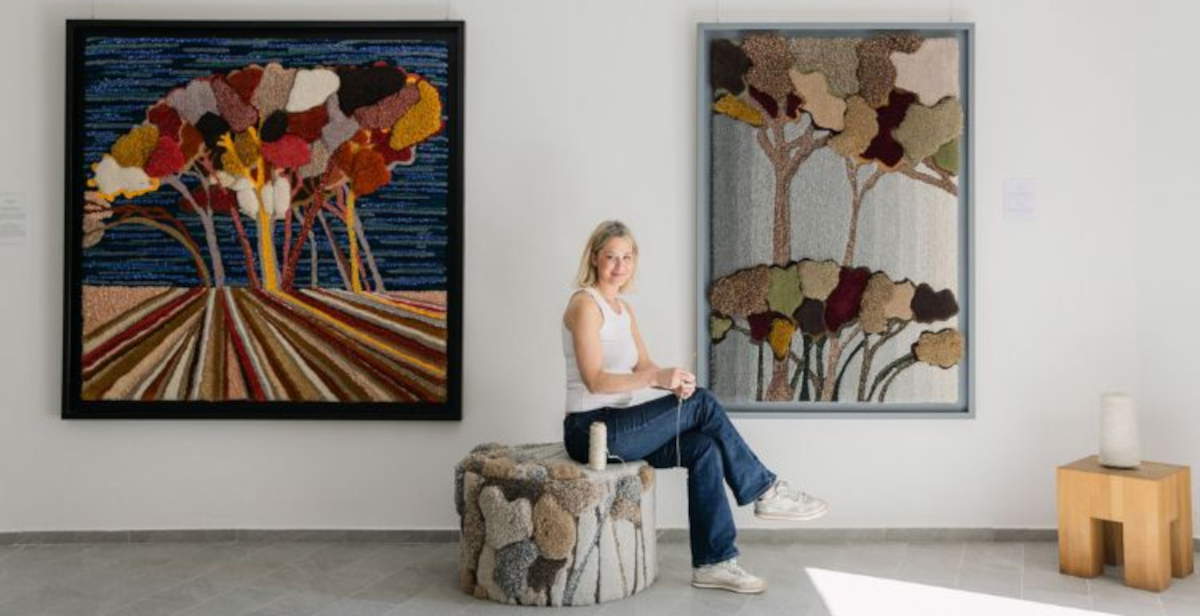 |
| Turning the avant-garde into tapestry. The work of Dutch-Florentine artist Jules Visser |
Warning: the translation into English of the original Italian article was created using automatic tools. We undertake to review all articles, but we do not guarantee the total absence of inaccuracies in the translation due to the program. You can find the original by clicking on the ITA button. If you find any mistake,please contact us.